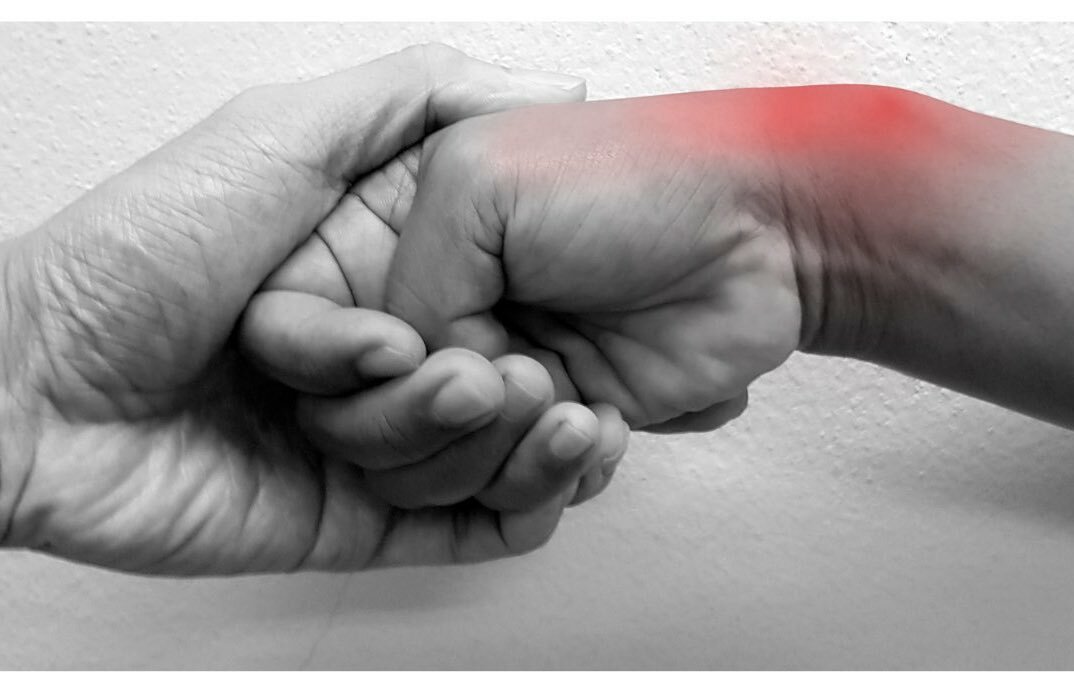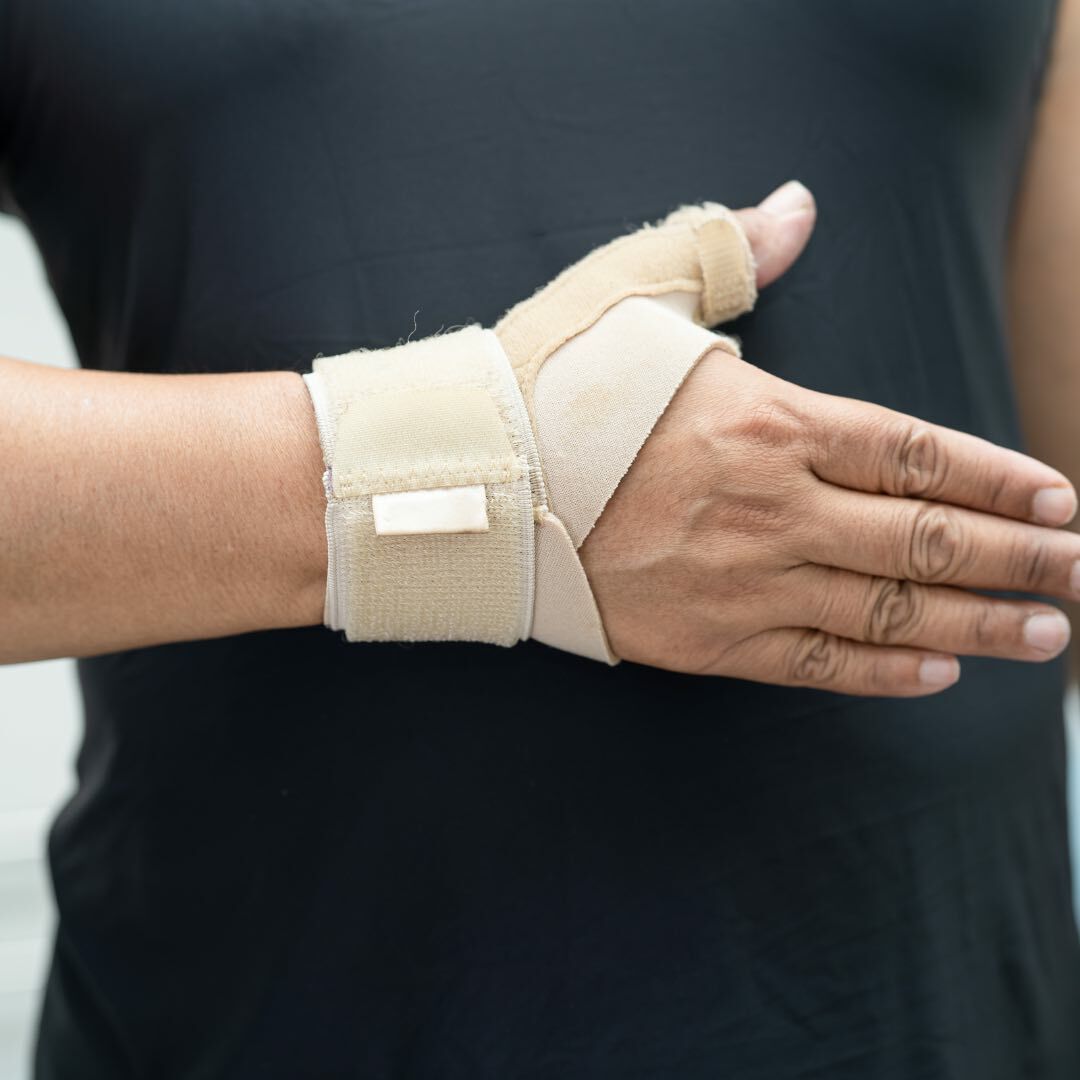Overview
de Quervain tendinopathy is a common cause of pain in the wrist.
de Quervain tendinopathy is a common cause of wrist pain and affects the abductor pollicis longus (APL) and extensor pollicis brevis (EPB) tendons. The cause is unknown but thought to be due to overuse or repetitive movements. It is classically described in women who are postpartum from repeatedly picking up their baby. The condition is typically self-limiting.
Aetiology & pathophysiology
The exact cause of de Quervain tendinopathy is unknown.
Traditionally, de Quervain tendinopathy was thought to be due to repetitive activities that maintain the thumb in extension and abduction (i.e. the thumb held away from the hand as it lies flat in the plane of the palm). This movement is brought about by the APL and EPB tendons. The condition is classically observed in the early postpartum period from women repeatedly picking up their babies. While there is minimal evidence that it is due to overuse or repetitive movements it is definitely aggravated by excess hand use once established.
de Quervain tendinopathy affects the APL and EPB tendons as they pass through a fibro-osseous tunnel from the forearm to the hand. Histologically, there is noninflammatory thickening of the tendons and the sheath they pass through.
Clinical features
de Quervain tendinopathy is characterised by wrist pain on the radial side by the thumb.
Symptoms
- Wrist pain (radial side)
- Pain aggravated by holding or gripping objects (e.g. using scissors)
Signs
- Tendons tender to palpation
- Swelling
- Clicking/snapping
Diagnosis & investigations
de Quervain tendinopathy is a clinical diagnosis.
The diagnosis of de Quervain tendinopathy is usually made based on a history of atraumatic wrist pain and tenderness over and around the radial styloid. This area corresponds to the first dorsal compartment through which the tendons travel.
Radiographs do not have a role in the diagnosis, but ultrasound may show evidence of thickened tendons with hypervascularity on colour Doppler.
The Finkelstein manoeuvre can be used to test for the condition. It is done by gently rotating the patient’s wrist in an ulnar direction while the patient’s fingers are folded over the thumb.

Finkelstein manoeuvre
Management
de Quervain tendinopathy is usually a self-limiting condition that does not require intention.
de Quervain tendinopathy is a non-progressive condition and the majority of cases are self-limiting. Patients should be advised simple measures including avoiding aggravating activities, use of ice/heat, analgesia (e.g. paracetamol, NSAIDs), and if necessary a splint that immobilises the thumb and wrist.
In patients where simple measures inadequately resolve the pain steroid injections can be considered. In severe cases, surgery can be considered to decompress the tendon tunnel.

Example of a splint immobilising wrist and thumb

